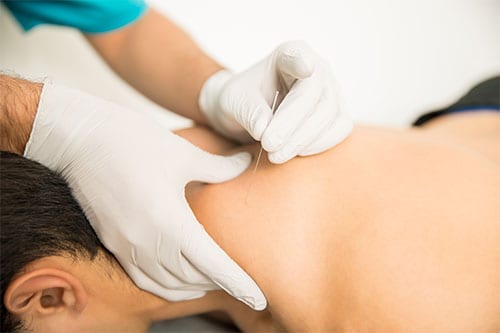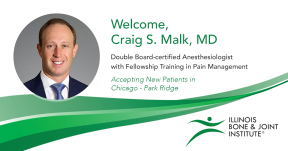If you have been to a physical therapy clinic lately, chances are that you have seen or heard about physical therapists using needles as part of their treatment approach. Your initial thought was likely something along the lines of, “Physical therapists are doing acupuncture now?”
This is the common assumption, but it is incorrect. Physical therapists use an intervention known as dry needling. So, what is all the hype? What is dry needling, and how is it different from acupuncture? Well, now that I have you on pins and needles, let’s clear up some of the confusion.
Is Dry Needling similar to Acupuncture?
Dry needling and acupuncture both involve puncturing the skin with tiny needles for the purpose of pain relief, but the similarities end there.
Western vs. Chinese Medicine
Dry needling is based strictly on Western medicine principles and research. Acupuncture is a key component of traditional Chinese medicine. Traditional Chinese medicine explains acupuncture as a technique used to balance the flow of energy or life force (known as chi or qi) which flows through pathways (known as meridians) in your body. By inserting needles into specific points along these pathways (meridians), acupuncture practitioners are believed to be balancing the flow of energy.
What is Dry Needling?
Dry needling is a skilled intervention in which a thin needle is inserted into the skin and muscle directly at a myofascial trigger point. A myofascial trigger point is more commonly referred to as a “knot” in the muscle which causes pain. The needle is inserted into the “knot” with straight in-and-out motions to elicit a local twitch response. This creates favorable biochemical changes within the muscle to reduce pain, reduce muscle tension, and improve motor function.
Is Dry Needling right for you?
Trigger point dry needling can be used to treat a number of musculoskeletal conditions, including, but not limited to, headaches, as well as pain in the neck, back, shoulder, arm (tennis elbow, golfer’s elbow), jaw, buttock and leg (sciatica, hamstring strains, calf tightness/spasms). Treating the muscles has a great effect on reducing the pain mechanisms within the nervous system. However, needles are not for everyone. Regardless of the many benefits, if you are someone who really dislikes needles, then dry needling may not be for you. Discuss with your physical therapist the potential benefits of adding dry needling to your treatment program, or other (needle-less) options that may work for you.
To sum it up, dry needling and acupuncture can be difficult to differentiate on the surface. However, the science and mechanisms behind both treatments are extremely different. So now you know, if you see your physical therapist using a needle, you are observing dry needling rather than acupuncture.
Felisha Bartnicki, DPT, OCS, is a Physical Therapist at Illinois Bone & Joint Institute.

Felisha Bartnicki, DPT, OCS
Physical Therapist, Illinois Bone & Joint Institute




.jpg)
